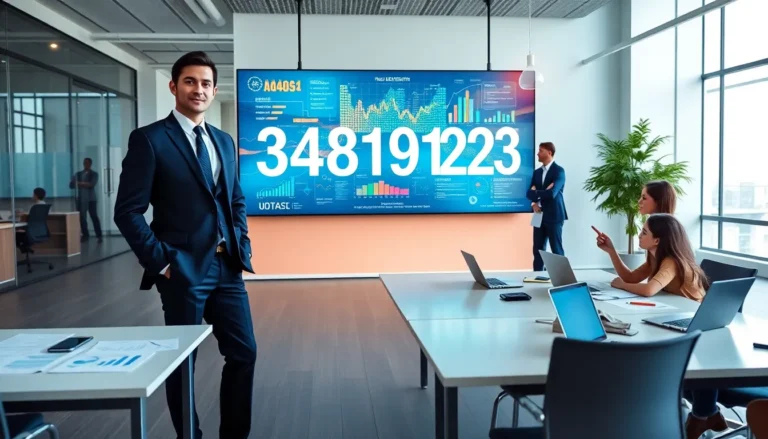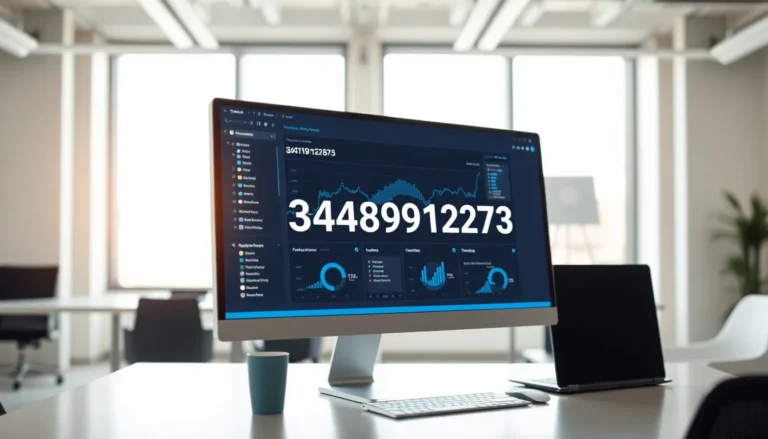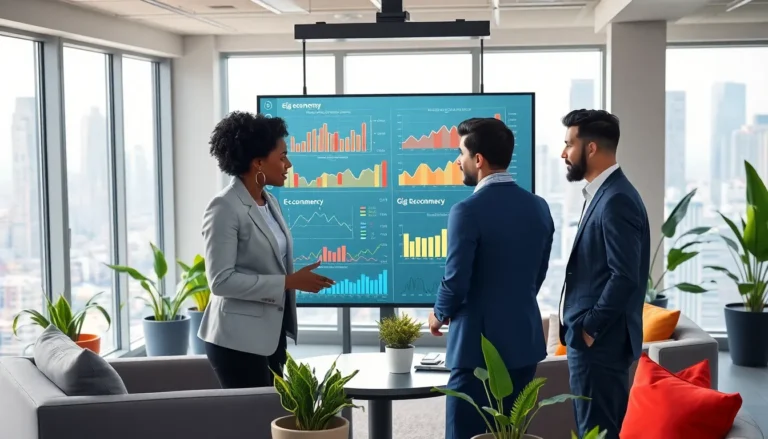Time can feel like both a friend and an enemy, especially when waiting for a specific moment. For many, the question of “how much longer until 11:15” isn’t just about the hours and minutes ticking away; it’s about anticipation and planning. Whether it’s a meeting, a break, or a special event, knowing the countdown can ease anxiety and help organize thoughts.
As the clock moves forward, understanding how to calculate the remaining time becomes essential. With simple techniques and tools, anyone can quickly figure out how long they have to wait. This article dives into those methods, offering insights to help anyone stay on track and make the most of their time.
Table of Contents
ToggleUnderstanding Time Concepts
Time operates on multiple levels, influencing daily activities and emotional experiences. Recognizing its dual nature enhances time management and anticipation.
The Nature of Time
Time consists of two perspectives: quantitative and qualitative. Quantitatively, time is measured in hours, minutes, and seconds. Qualitatively, it influences emotions and perceptions. For instance, waiting for 11:15 can feel prolonged or swift depending on activities engaged in during that period.
Units of Measurement
Time is divided into distinct units.
- Seconds: The basic unit, 60 seconds comprise 1 minute.
- Minutes: Used to account for short durations, 60 minutes form 1 hour.
- Hours: Summarizing longer stretches, 24 hours complete a day.
Understanding these units clarifies the passage of time and aids in planning tasks efficiently.
Time Zones
Time zones affect perceptions of time. Geographic regions experience different local times due to the Earth’s rotation. When calculating how long until 11:15, consider the specific time zone. For example, 11:15 AM EST occurs simultaneously as 8:15 AM PST.
Time Management Techniques
Effective time management enhances productivity and reduces anxiety. Several techniques include:
- Timers: Use timers to track remaining minutes until an intended moment.
- Calendars: Mark days and times, setting reminders for specific events.
- Prioritization: Focus on important tasks to allocate time effectively.
By utilizing these techniques, individuals can navigate waiting periods constructively, turning anxiety into productive actions.
Methods to Calculate Time

Various methods exist to calculate the remaining time until a specific moment like 11:15. Each method caters to different preferences and situations.
Using Analog Clocks
Using analog clocks provides a visual representation of time. Individuals can observe the position of the hour and minute hands. To calculate time remaining, identify the current time, then determine the angles and intervals between the hands and the target time of 11:15. For example, if it’s currently 10:45, the minute hand is positioned at the 9, while the hour hand is slightly past the 10. The interval between these positions indicates a remaining time of 30 minutes.
Using Digital Clocks
Using digital clocks simplifies time calculation with clear numerical displays. Individuals read the current time directly as numbers. To calculate the remaining time until 11:15, subtract the current time’s hours and minutes from 11:15. For instance, if it’s 10:50, the calculation is as follows:
- Hours: 11 – 10 = 1 hour
- Minutes: 15 – 50 = -35 minutes
Since negative minutes indicate an hour is needed, the total time remaining becomes 1 hour minus 35 minutes, equating to 25 minutes. This method allows quick and precise calculation, easing anxiety during waiting periods.
Common Scenarios Related to Time
Understanding time helps in managing various daily scenarios, especially when anticipating a specific moment like 11:15. Many activities and events revolve around precise timing, impacting organization and emotional responses.
Timing Events and Activities
Timing can significantly affect the success of events and activities. Individuals engaged in planning often rely on specific timeframes for effective execution.
- Meetings: Scheduled meetings benefit from defined start and end times. For example, a meeting set to start at 11:00 requires attendees to arrive by 10:55 for preparation.
- Appointments: Medical or professional appointments typically operate on a strict schedule. Arriving five minutes before an 11:15 appointment ensures time for check-in.
- Public Transport: Buses and trains adhere to set departure times. Knowing the time left until a scheduled 11:15 departure helps in planning arrival.
- Classes: School or university classes often begin at set times. A class starting at 11:15 necessitates students to arrive punctually, encouraging on-time behavior.
Planning Around Specific Times
Planning around specific times enhances productivity and reduces anxiety. Implementing effective strategies ensures optimal use of available time.
- Setting Reminders: Utilizing digital reminders creates alerts ahead of important events. Setting an alert for 10:45 before an 11:15 meeting prompts timely preparation.
- Time Blocking: Allocating chunks of time for specific tasks ensures focus. For instance, dedicating 30 minutes for studying before an 11:15 test improves retention.
- Prioritizing Tasks: Listing tasks based on urgency helps manage workload efficiently. Completing high-priority tasks by 11:00 allows flexibility for unplanned activities thereafter.
- Adjusting Schedules: Understanding time constraints allows for adjustments. If an activity overlaps with 11:15, rescheduling it for an earlier or later time becomes essential.
Utilizing these strategies can help individuals navigate their day while maintaining focus on notable times like 11:15.
Psychological Factors of Waiting
Waiting involves various psychological factors that impact how individuals perceive time. Anxiety increases during periods of waiting, often leading to impatience or stress. Stress management techniques, such as deep breathing or mindfulness, can reduce feelings of anxiety.
Attention span influences how individuals experience wait times. Longer waits often feel more tedious, while engaging tasks can make time seem to pass more quickly. Distraction techniques, like listening to music or reading, can improve waiting experiences.
Expectations also play a critical role. Individuals anticipating a specific outcome, such as an event at 11:15, may experience heightened emotions and increased anxiety as they near the time. Positive expectations can create excitement, while negative expectations can lead to disappointment or frustration.
Social interactions influence wait perceptions as well. Communication with others can ease anxiety and enhance the waiting experience. Shared experiences, such as waiting together, foster camaraderie and lessen individual stress.
Lastly, subjective interpretations of time can vary based on individual circumstances. Those engaged in enjoyable tasks may perceive time as moving faster, while those in less favorable situations often experience the opposite. Awareness of these psychological factors can help individuals manage their waiting periods effectively.
Waiting for a specific time like 11:15 can evoke various emotions and challenges. By understanding the dual nature of time and employing effective strategies for time management, individuals can navigate these moments with greater ease. Utilizing tools such as timers and calendars can transform anticipation into productive activities.
Incorporating stress management techniques and engaging in meaningful distractions can further enhance the waiting experience. Ultimately, awareness of both the quantitative and qualitative aspects of time empowers individuals to make the most of their waiting periods. With the right mindset and tools, waiting can become an opportunity for growth and productivity rather than a source of anxiety.








